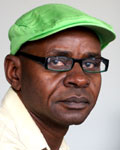
Subscribe & Follow
#AfricaMonth
In the news
Just how effective is mobile marketing?
The truth is that many people do not understand how to define the mobile market and interpret its dynamics in order to be able to effectively market to mobile users.
According to a 2009 World Wide Worx report, the camera is the most used tool in mobile in SA with 59%, followed by MMS (39%), FM radio (29%) and instant messaging (28% or 4-6 million people). Internet browser took a distant fifth place (21%) and email only came up with 10% followed by GPS (5%).
Attempt to define
In an attempt to define the mobile Internet, MD of Word Wide Worx Arthur Goldstuck said that there are four tiers and their respective numbers that people should take into consideration before proclaiming mobile marketing's premature victory. Goldstuck was speaking at the SAS marketing optimisation breakfast presentation yesterday, Thursday, 11 March 2010, at Melrose Arch in Johannesburg.
He said WAP usage in SA is 12-14 million, application Internet is 10-12 million, web browsing on phone is approximately 3.5 million and phone as primary Internet access device is only 500 000. This could only mean that one has to take the total number of Internet users (10-12 million) and reduce it down to those who really browse the Internet on mobile.
“These figures should tell you that mobile is not ahead of the curve and is not as big yet as people claim,” he said.
“These days there is so much hype around numbers, which are sometimes exaggerated. Therefore we should be careful how we interpret these figures,” Goldstuck warned.
Solved
Goldstuck said an important milestone occurred on 11 July 2008, thanks to the iPhone (app store), Blackberry (app world), Nokia (Ovi store), Android (app market) and Windows Mobile (market place), which solved the world's problem of content but not the problem of small screens.
“All these phones have small screens but not compared to ordinary PC screens, meaning you are marketing to people through small screens,” he said, quoting Paul Morreton.
He said developers in the abovementioned markets keep 70-80% of revenues, while most stores require fee listings.
Advice for marketers
But what do you do when people tell you there are 12 million mobile Internet users? Goldstuck had this piece of advice for marketers:
- Do not try to target ‘mobile Internet' because people are using different applications in their phones.
- Gain an understanding of the niches - distribute content where niches feel comfortable.
- Understand how the mobile user uses the device.
- Develop separate strategies for each niche.
- Accept that one strategy does not fit all - no such thing.
- Do not fall for the big hype of big numbers.
- The war is not yet over - people still argue about when the phone will replace the real computer.
- End of the non-digital content - “I am not saying that there will be no more newspapers or magazines, but as far as I know these industries are dead and SA will soon follow suit.”
Other speakers included Simon Marland of Nedbank Retail, who spoke about the value of optimisation in business.















